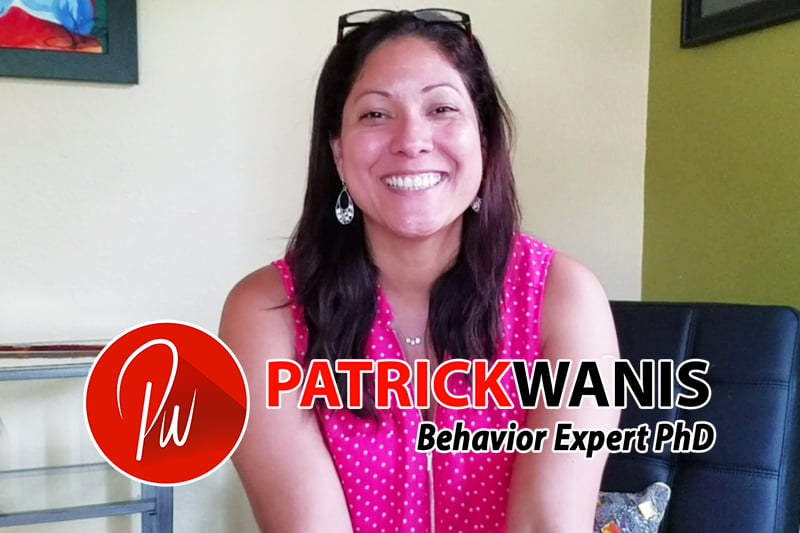
Crying and punching pillows does not heal your issues!
Why do most therapies fail?
Reliving painful emotions in therapy does not heal you!
Traditional therapy teaches that to release emotion, one should cry or express that emotion. And yet it fails. Crying doesn’t heal the issue, nor does punching a pillow!
Traditional therapy doesn’t focus on getting to the root cause of the issue. And if it does get to the root cause, traditional therapy doesn’t know how to remove that cause, nor does it know how to release the emotions.
SRTT does, though!
Clifton Brantley, Licensed Marriage and Family Therapist, interviews Patrick Wanis PhD creator of SRTT (Subconscious Rapid Transformation Technique) to learn more about SRTT and why it effectively releases emotion in a safe and easy manner without reliving pain or trauma and, why and how it gets to the root cause of the issue and emotion.
Clifton Brantley experienced an SRTT session with Patrick Wanis and Clifton says he is shocked by how effective it was – getting extraordinary results without reliving any pain or trauma – and he says that in less than 2 hours he achieved more than 6 sessions of traditional therapy! Watch his video testimonial below and watch the video testimonial further below by Jill who spent 2 years in anger management but it failed, and then she came to Patrick Wanis and in 2 SRTT sessions, he helped Jill clear out a lifetime of anger!
Listen to the full interview below of Patrick Wanis by Clifton Brantley.
Here is a brief excerpt from the interview with Patrick Wanis:
It’s important to understand that experiencing more of the same emotion does not neutralize or release the emotion, nor does it get to the root cause of the emotion.
That means there’s an incident, there’s a thought, a belief that is creating this emotion. And just experiencing more of that emotion or expressing more of that emotion will not change the subconscious belief, the subconscious incident or the subconscious thought or perspective that created this emotion.
So to release that emotion I don’t just ask someone to just express more of that emotion, nor do I encourage them to cry over that emotion. Instead, I use a special process – a really simple and highly effective process – which you, too Clifton, have experienced to release that emotion. And again, it’s not done by reliving pain, reliving trauma or expressing more of that same emotion.
And having said that, I do though still encourage people to get in touch with what they are feeling. You’ve got to also have emotional intelligence – that means emotional awareness. Be aware of what you are actually feeling: is it anger? Is it sadness? Is it loss? Is it hurt? Is it disappointment? Is it rejection? Is it invalidation? Is it a sense of worthlessness, etc.?
Yes you’ve got to get clear about that.
However, asking you to express that emotion and make you feel it in your body is not helpful to you, and it doesn’t relieve you of the actual cause, it doesn’t neutralize the emotion, it doesn’t release the emotion, it doesn’t remove the emotion. Crying can make you temporarily feel better and then when you walk out of the office, when you’re back home, you’ll just end up reliving that pain and that negativity again. Why? Because unless you clear out the root cause of that emotion, you’ll keep re-experiencing it.
And I’ve had many clients come to me saying that they’ve done other forms of therapy, they’ve been in those sessions, and they are encouraged to release the emotion, to cry to express it, to express their anger, and then when they go home they feel exactly the same! They haven’t released the actual root cause of the issue and of the emotions.
Listen now to the full interview with Patrick Wanis’ insights directly below.
And watch this video testimonial by Jill who in just 2 SRTT sessions by Patrick Wanis was freed of the anger she held onto since childhood.
Read the transcript of this interview “Crying & Reliving Pain & Trauma Doesn’t Heal You”
Anointed “The Woman Expert” by WGN Chicago, Patrick Wanis PhD is a renowned Celebrity Life Coach, Human Behavior & Relationship Expert who developed SRTT therapy (Subconscious Rapid Transformation Technique) and is teaching it to other practitioners. Wanis’ clientele ranges from celebrities and CEOs to housewives and teenagers. CNN, BBC, FOX News, MSNBC & major news outlets worldwide consult Wanis for his expert insights and analysis on sexuality, human behavior and women’s issues. Wanis is the first person ever to do hypnotherapy on national TV – on the Montel Williams show.
